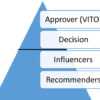The term ‘smarketing’ has become increasingly prominent. This innovative concept represents the amalgamation of sales and marketing – two traditionally distinct departments with a shared goal: business growth. But what exactly is smarketing, and why should organizations embrace it? Let’s dive in.
What is Smarketing?
Smarketing is the integration of sales and marketing processes within an organization. The goal is to have these two departments work in harmony rather than in silos. By aligning goals, strategies, and communication, smarketing ensures that both teams are on the same page, leading to enhanced efficiency, customer satisfaction, and revenue growth.
Why Embrace Smarketing?
1. Enhanced Communication and Collaboration: Smarketing encourages open communication and collaboration between sales and marketing. This alignment reduces friction and misunderstandings, leading to a more cohesive strategy.
2. Consistent Messaging: With both teams aligned, the messaging to the customer becomes consistent throughout the customer journey. This consistency builds trust and enhances the overall customer experience.
3. Efficient Use of Data: Sharing data between sales and marketing leads to more informed decisions. Marketing gains insights from sales on customer feedback, while sales can better understand the market through marketing analytics.
4. Increased Revenue: Companies with strong sales and marketing alignment achieve up to 20% annual revenue growth, as opposed to companies with poor alignment, which see revenues decline.
5. Improved Customer Insights: By working together, sales and marketing can develop a deeper understanding of customer needs and behaviors, leading to more effective targeting and personalized experiences.
Implementing Smarketing in Your Organization
1. Set Common Goals: Establish shared objectives and key performance indicators (KPIs) for both sales and marketing. This alignment ensures that both teams are working towards the same business outcomes.
2. Foster Open Communication: Regular meetings and open channels of communication are essential. Encourage teams to share insights, challenges, and feedback.
3. Utilize Integrated Technology: Implementing tools like CRM systems that can be used by both sales and marketing ensures a seamless flow of information and data.
4. Create a Culture of Mutual Respect: Encourage each department to understand and respect the other’s challenges and contributions. This fosters a more collaborative environment.
5. Continuous Learning and Adaptation: Keep adapting strategies based on market changes and customer feedback. This agility is key to staying relevant and successful.
Smarketing is not just a buzzword; it’s a strategic approach that can drive significant growth and efficiency in organizations. By embracing smarketing, companies can ensure that their sales and marketing teams are not just coexisting but are collaborating effectively to achieve common goals. It’s an evolution in organizational culture and strategy that can lead to better customer experiences, enhanced revenue, and a stronger competitive edge.
—
This blog post outlines the importance and implementation of smarketing in modern organizations. It emphasizes the benefits of aligning sales and marketing teams to achieve better communication, efficient data use, and ultimately, increased revenue.









